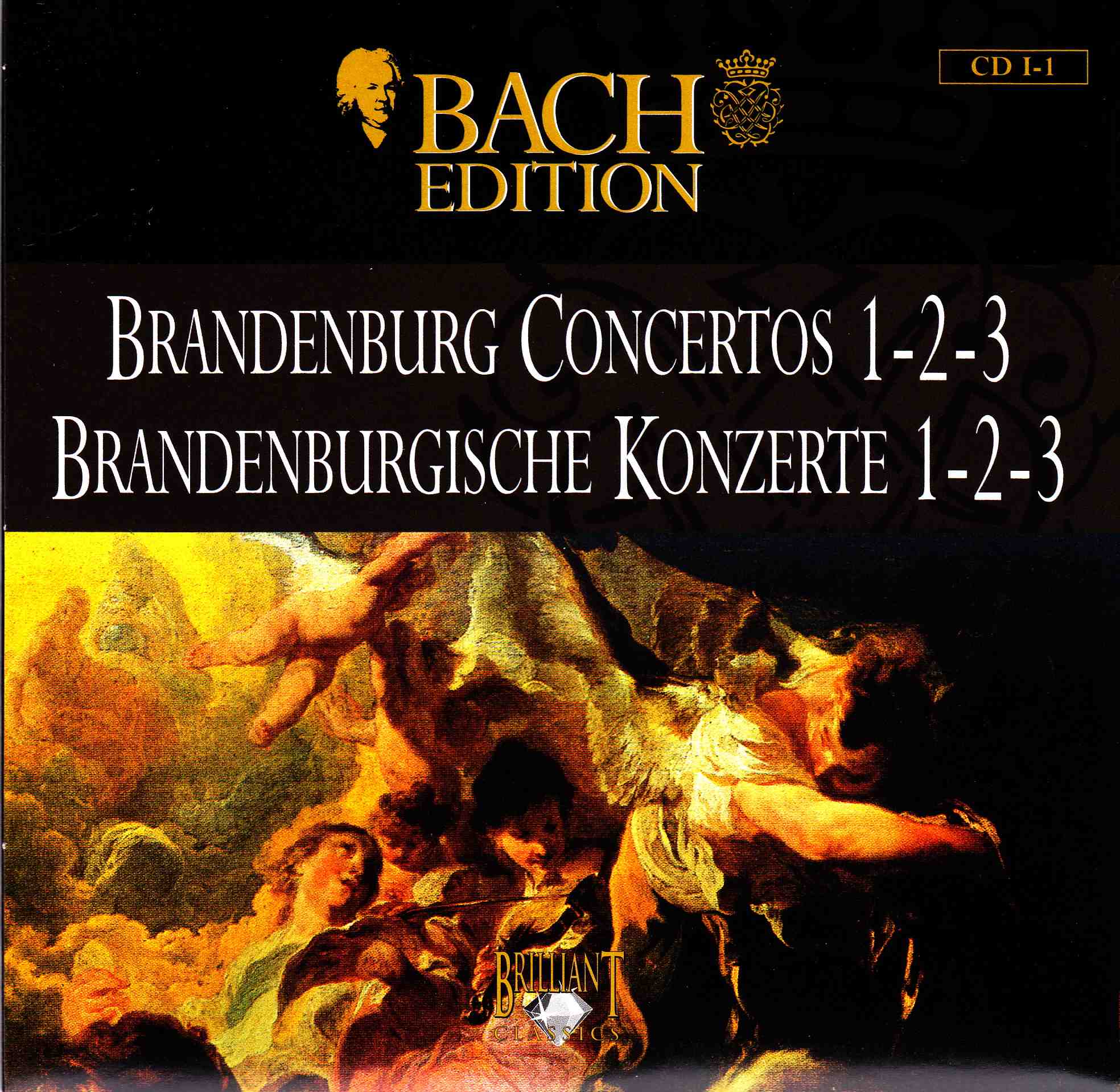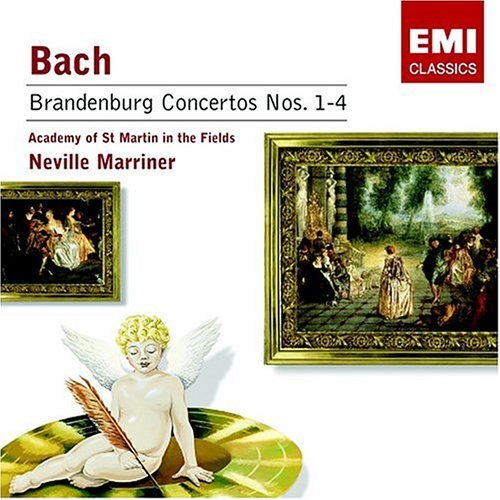 Bach’s Brandenburg Concertos 1-2-3 are probably among the 3-4 most-recognized classical recordings in the world, and are one of my personal top four pieces of classical music (after Mozart’s “Eine kleine Nachtmusik,” “Symphony No. 40 in G minor,” and “Piano Sonata No. 11 in A major”).
Bach’s Brandenburg Concertos 1-2-3 are probably among the 3-4 most-recognized classical recordings in the world, and are one of my personal top four pieces of classical music (after Mozart’s “Eine kleine Nachtmusik,” “Symphony No. 40 in G minor,” and “Piano Sonata No. 11 in A major”).
This Brilliant Classics version of the Brandenburg Concertos was recorded in 2006 by Musica Amphion, conducted by Pieter-Jan Belder. According to the Musica Amphion web site,
MUSICA AMPHION, founded in 1993 by harpsichord and recorder player Pieter-Jan Belder, is dedicated to the performance of orchestral and chamber music from the 17th and 18th century on original instruments.
The leader is violinst Rémy Baudet, concertmaster of the Orchestra of the Eighteenth Century (led by Frans Brüggen). Musica Amphion draws its players from the ranks of prominent Baroque orchestras, including the Orchestra of the Eighteenth Century, the Amsterdam Baroque Orchestra, the Nederlands Bachvereniging, the Freiburg Baroque Orchestra and the Academy of Ancient Music. Most of the musicians also enjoy a successful solo career.
Musica Amphion has appeared at the Early Music Festival Utrecht, the Festival Classique in The Hague, and the Bach Festival Amsterdam. Musica Amphion is regularly performing in the Amsterdam Concertgebouw and has performed at other prominent venues world-wide.
Lest anyone think using period instruments has no appreciable affect on the sound of the recording, these performances of the Brandenburg Concerts will immediately dispel that notion. Because the Brandenburg Concertos are my favorite pieces by Bach, I have several performances by different orchestras, including (my favorite) Sir Neville Marriner conducting the Academy of St. Martin in the Fields (recorded 1985 in Abbey Road Studios, London). 
The difference between the two recordings is striking, the most noticeable of which is in the French horns. In the Brilliant Classics performances, the French horns are brassier and more out front than in the Sir Neville Marriner performance. Plus — and this is highly subjective — the Brilliant Classics performance feels less intimate. It has a vaguely cavernous, detached quality to it. Maybe that’s because I’m so used to the sound of the EMI edition. Maybe the period instruments add a harshness or a rawness that keeps me on the outside of the performance, rather than drawing me in.
By the way, who or what was Brandenburg? From the text (CD-ROM) included with the Brilliant Classics edition:
The surviving orchestral works of Johann Sebastian Bach provide examples of concertos and suites, the two most important orchestral genres in the late Baroque. Bach dedicated his final versions of the six Brandenburg Concertos (BWV 1046-1051) on March 24, 1721 to Christian Ludwig, the Margrave of Brandenburg. Probably each concerto had had earlier performances (at least two – Nos. 1 and 5 – in different versions) in Weimar or Cöthen. The Brandenburg Concertos are not solo concertos in the sense in which we understand concertos today, but examples of earlier forms of concerted music. Each of the six features a different combination of solo and tutti instruments, combinations that are highly unusual for the late Baroque.
Dedicating his final versions on March 24, 1721, means Johan Sebastian Bach was 36 when he finished these compositions.
For more information about the Brandenburg Concertos 1-3, visit the Wikipedia entry.

 You can call me Johann. But don't expect me to answer to that.
You can call me Johann. But don't expect me to answer to that.
Kudos! This is a truly ambitious project, and an inspiration, to boot!
I’m in the process of tagging all 157 CDs of the BCE in my iTunes library, and your blog here has proven quite a valuable resource for research -and commentary 😀
I look forward to wading through this delightful “fool’s errand”. Keep up the excellent work!